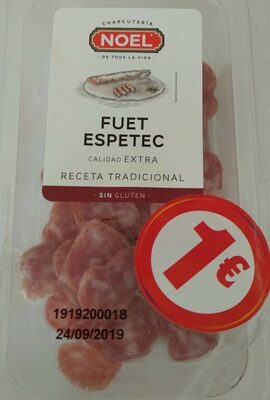Fuet Espetec - Noel - 100 g
This product page is not complete. You can help to complete it by editing it and adding more data from the photos we have, or by taking more photos using the app for Android or iPhone/iPad. Thank you!
×
Barcode: 8410783328154 (EAN / EAN-13)
Quantity: 100 g
Packaging: Plastic
Brands: Noel
Categories: Meats and their products, Meats, Prepared meats, Sausages, French sausages, Sausages from Spain, fr:Fouets catalans
Labels, certifications, awards: No gluten
Countries where sold: Spain
Matching with your preferences
Environment
Packaging
Transportation
Report a problem
Data sources
Product added on by elcoco
Last edit of product page on by packbot.
Product page also edited by elcoco.b0549c2430a48adc3c803f229e87a309, kiliweb, roboto-app, saisa, thaialagata, yuka.RjZRN0RhVWFpdGczeFBOajFCUHY1OTF1dzRHMlRVbWNMdGRJSVE9PQ.
If the data is incomplete or incorrect, you can complete or correct it by editing this page.










